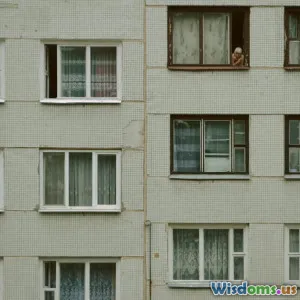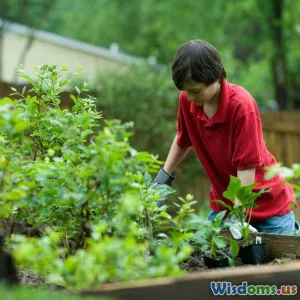
Why Multigenerational Homes Are Making a Comeback in the US
13 min read Discover the reasons fueling the resurgence of multigenerational homes in America, from shifting economics to evolving family values, and what it means for the nation's future. (0 Reviews)
Why Multigenerational Homes Are Making a Comeback in the US
Introduction: The Renaissance of Shared Living
Imagine walking into a bustling home, where the aroma of a family recipe floats across generations gathered in one living space. In one corner, a grandmother coaches her granddaughter through homework; in another, a young couple brainstorms with an uncle about launching a small business. Though this may sound like an image from a bygone era, multigenerational living is rapidly returning to the American mainstream.
According to the Pew Research Center, 2021 marked a historic high as nearly 60 million people—more than one in five Americans—lived in multigenerational households. Once considered a relic of the past or a practice limited to certain cultures, it has now turned into a well-considered solution driven by economics, demographics, and shifting social values. Why is this trend reemerging so strongly? And what does it reveal about the nation's evolving understanding of family, responsibility, and resilience?
Changing Economic Realities: The Power of Shared Resources
Navigating Housing Affordability Crisis
In the last decade, housing affordability in the United States has reached crisis levels. The National Association of Realtors reported in 2023 that home prices have increased throughout most markets, putting pressure on first-time buyers and retirees alike. The cost of rent has surged in major urban centers and even smaller towns, leading families to rethink how—and with whom—they share walls and expenses.
Living together offers a direct solution:
- Shared costs. Pooling resources reduces individual burdens for mortgage payments, utilities, repairs, and other living expenses. For Millennials and Gen Z adults who struggle with student debt and stagnant wages, moving in with parents or extended family can be the financial lifeboat they need.
- Access to better housing. Instead of renting cramped apartments, families living together can invest collectively in larger homes with amenities that may otherwise be out of reach if purchased separately.
“Joining forces helped us buy a four-bedroom house in a good school district, something neither my wife’s parents nor we could afford alone,” says Shirley Rodriguez of San Antonio, Texas, whose three-generation family made the move in 2020.
Buffering Economic Shocks and Uncertainties
Emergencies—like the COVID-19 pandemic or sudden layoffs—exposed vulnerabilities in the typical nuclear family model. Households joined together to weather the storm: Young adults returned home after campus closures and layoffs, elderly parents moved in to avoid care facility outbreaks, and distant relatives sought safety and solidarity.
More than a temporary situation, for many, these practical arrangements meant longer-term security and support. In 2020, roughly 52% of young adults aged 18-29 lived with one or more parents—the highest level since the Great Depression.
Demographic Trends: Aging America Meets Delayed Adulthood
The Aging Population and Elder Care
The US is experiencing an unprecedented demographic shift: the baby boomer generation is aging rapidly, with the Census Bureau projecting one in five Americans will be over 65 by 2030. The need for affordable and compassionate eldercare is creating pressure points for both policy and personal life.
Nursing home costs have exploded, often exceeding $90,000 annually for private care. Many families cannot afford institutional care and wish to keep relatives close as they age. Multigenerational homes often provide a solution for aging in place, allowing elders to retain dignity and connection while saving money.
"We converted the basement to an accessible apartment for my father. Now, he’s surrounded by family support, and we’re able to keep an eye on his health without turning to institutional care,” shares Marcus Bell, a homeowner in Seattle.
Adult Children Launching Later
Simultaneously, younger generations face higher costs for education, a competitive job market, and rising living expenses. This has given rise to the so-called “Boomerang Generation”—young adults returning to their parental home after college, often to save money or support their career transition.
Multigenerational homes offer flexibility and the cushioning effects of shared living without isolation. In 2022, a survey by Zillow found that over 12% of homebuyers specifically searched for properties suitable for multiple generations—a trend reflected in growing architectural adaptations nationwide.
Cultural Shifts: Blending Tradition With Modern Priorities
Diverse Cultural Influences
While the resurgence of multigenerational households is a national phenomenon, it’s often championed by communities where extended-family living is a norm. Among Asian, Hispanic, and African families, this approach is both cultural and practical. As America grows more diverse, these traditions are influencing mainstream residential choices.
Consider a Vietnamese-American family near Los Angeles: “We’ve always lived with grandparents, and now my children are learning their language and culture firsthand—it’s something money just can’t buy,” says Minh Tran, highlighting the non-financial benefits.
Emphasizing Connection Over Independence
The stereotype of American individualism is giving way to a renewed appreciation for interdependence—the recognition that resilience and wellbeing often stem from collective support. Pandemic lockdowns, social media fatigue, and growing awareness of mental health challenges have led numerous households to discover that being together can be rejuvenating rather than restrictive.
Children gain wisdom from elders, parents have built-in childcare or afterschool help, and seniors are less isolated and more active. This arrangement challenges notions that success means living independently at all costs.
Architectural & Real Estate Adaptations: Homes Evolving With Need
Designs for Modern Multigenerational Living
The real estate sector is adapting swiftly. Builders are offering dual-master floor plans, in-law suites, and flexible accessory dwelling units (ADUs). In 2021, builders like Lennar and Meritage Homes reported double-digit percentage increases in demand for their “Next Gen” models, which include self-contained living quarters within a single home.
Modern layouts differ from the just add-on in-law apartments of the past. Many now provide:
- Separate entrances and kitchens for privacy
- Soundproofed spaces
- Shared gathering rooms designed to accommodate larger family groups
These designs recognize that successful multigenerational homes foster autonomy as well as togetherness.
The Rise of ADUs and Urban Planning Shifts
Accessory Dwelling Units—sometimes called granny flats or backyard cottages—have surged in popularity across states like California, Oregon, and Washington. Policy is making these easier to create: for example, California’s 2017 ADU law removed many barriers, leading to fourfold increases in units permitted by 2022.
Urban planners are reckoning with the need for a new approach to housing that supports families at every stage—not just nuclear, not just for retirees, but all generations.
The Emotional and Practical Benefits
Emotional Safety Nets and Resilience
Besides the clear financial advantages, multigenerational homes embed an emotional safety net. Children grow up surrounded by more adults who care for them. Grandparents retain a sense of purpose and daily interaction. Care responsibilities, both for elders and for youngsters, are shared, reducing stress and preventing burnout.
Families report that living under one roof—even when tricky—helped them weather emotional storms: bereavements, personal crises, or difficult life transitions. For single parents especially, the backup from extended family can be transformative.
Family Legacy and Connection
A shared household can nurture intergenerational respect and learning. Elders can pass down not only memories and values, but also practical skills—from gardening to languages—to grandchildren. For immigrant families, this shared space is often a fortress against cultural amnesia, allowing traditions and knowledge to cross three or four living generations.
Navigating the Challenges: Honesty and Adaptation Required
While the positives are many, multigenerational living presents real challenges. Personalities can clash, privacy may feel compromised, and family conflicts sometimes resurface. Experts like family therapist Dr. Jody Johnstone stress the importance of clear communication and agreed boundaries as the foundation for a harmonious home.
Tips for Success:
- Draft clear agreements on finances, chores, and caregiving responsibilities.
- Designate private spaces for each subgroup within the household.
- Establish channels for regular communication and check-ins to address brewing concerns early.
- Practice empathy and flexibility; periodic family meetings can resolve conflicts before they escalate.
The Road Ahead: Implications and Inspirations
As the US faces future economic, demographic, and social uncertainties, multigenerational homes may become more than a fallback—they could establish a mainstream blueprint for American living. Policymakers are watching closely: some cities are revising zoning laws for flexible housing models, while home lenders adjust criteria for collective ownership or co-lending.
National associations are also urging innovations to keep pace: The National Association of Home Builders predicts that within 10 years, the demand for multigenerational-ready homes and ADUs will rise by 30%.
Conclusion: A New Era for the American Family?
The rise of multigenerational living isn’t just about practicality. It illustrates how Americans are reinventing tradition to better fit today’s realities—finding in old patterns a wealth of new opportunity. Whether out of necessity or choice, families across the US are rediscovering bonds and resilience through shared living.
This shift has profound implications: for the homes we build, the policies we develop, and the very stories we tell about family life. As home prices climb and life becomes ever more unpredictable, the greatest safety net may once again be drawn from the strength and diversity found under a shared roof—multiple generations, caring for one another and thriving together.
Rate the Post
User Reviews
Popular Posts



















